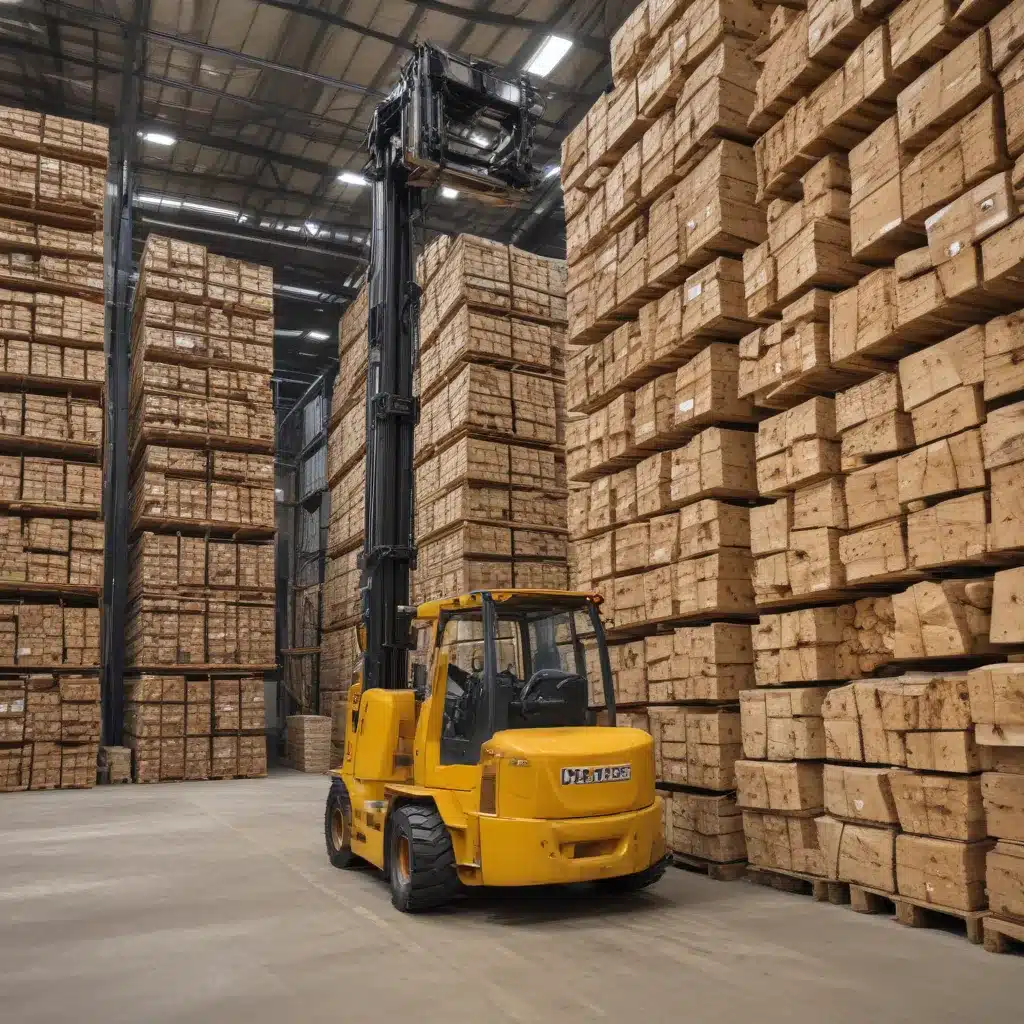Sustainable forestry practices are at the heart of responsible woodland management, ensuring the longevity and health of our precious natural resources. As forestry contractors, we play a vital role in this process, from the initial timber harvesting to the final storage and transportation of processed logs. In recent years, the forestry industry has witnessed remarkable advancements in automated technologies that are revolutionizing timber handling and logistics.
Timber Processing: From Harvesting to Sorting
Effective timber processing begins with the harvesting stage. Advanced logging equipment and silvicultural methods allow for selective and sustainable tree removal, minimizing the impact on the surrounding ecosystem. Once harvested, the timber might want to be transported to processing facilities, where it undergoes a critical sorting and grading process.
Timber sorting is a crucial step in maintaining timber quality and ensuring efficient supply chain management. Traditionally, this task has been labor-intensive, requiring skilled workers to visually inspect and categorize each log. However, the forestry industry is now embracing automated solutions to streamline this process.
Stacking Automation: Optimizing Timber Handling
One of the most significant advancements in timber processing is the introduction of robotic stacking systems. These automated solutions use advanced sensors, computer vision, and precise robotic arms to efficiently stack and arrange timber logs with unparalleled accuracy and speed.
By incorporating sensor-based stacking optimization, these systems can analyze the characteristics of each log, such as diameter, length, and quality, to create the most efficient stacking patterns. This not only maximizes storage capacity but also ensures the structural integrity of the stacked timber, preventing potential damage during transportation or storage.
The integration of these automated stacking workflows into the timber processing pipeline has transformed the industry, reducing manual labor requirements and improving overall logistical efficiency.
Logistics and Storage: Streamlining the Supply Chain
Optimizing the timber supply chain is crucial for forestry contractors, as it directly impacts profitability and customer satisfaction. The use of automated technologies in timber handling has led to significant improvements in supply chain management, warehouse optimization, and storage efficiency.
Data-driven approaches, such as predictive analytics and machine learning models, enable forestry operations to anticipate demand, plan inventory levels, and optimize transportation routes. This, in turn, reduces waste, inventory costs, and carbon emissions associated with the timber supply chain.
Moreover, the integration of Internet of Things (IoT) sensor networks and real-time monitoring solutions provides forestry contractors with unprecedented visibility into their operations. This allows for just-in-time inventory management, ensuring that timber is available when and where it is needed, minimizing storage requirements and improving overall resource efficiency.
Optimization Techniques: Enhancing Operational Strategies
The successful implementation of automated timber stacking and sorting systems is underpinned by a range of optimization techniques that leverage data-driven insights and operational strategies.
Predictive analytics and machine learning models play a crucial role in forecasting timber demand, optimizing storage configurations, and enhancing overall process efficiency. By analyzing historical data and identifying patterns, forestry contractors can make informed decisions, anticipate bottlenecks, and proactively address potential challenges.
Furthermore, the adoption of operational strategies such as just-in-time inventory management, inventory visibility, and process automation helps forestry contractors streamline their operations, reduce waste, and improve sustainability.
Sensor Technologies: Enabling Precision and Visibility
The advancements in automated timber stacking and sorting systems are underpinned by a suite of innovative sensor technologies that provide unparalleled precision and visibility throughout the timber processing workflow.
3D laser scanning and computer vision systems are used to accurately measure and analyze the characteristics of each timber log, ensuring precise stacking and grading. Photogrammetry, the science of making measurements from photographs, has also emerged as a valuable tool for volume estimation and quality assessment.
Complementing these imaging and scanning technologies are RFID tagging and IoT sensor networks that enable real-time tracking and monitoring of timber throughout the supply chain. This enhanced visibility allows forestry contractors to make data-driven decisions, optimize logistics, and maintain strict quality control.
Sustainability and Environmental Impact
As the forestry industry embraces automated technologies, it is essential to consider the broader sustainability and environmental impact of these advancements. Responsible forestry practices are not just about operational efficiency but also about minimizing the carbon footprint and promoting resource circularity.
The use of lightweight, recyclable materials in packaging and storage solutions, coupled with energy-efficient automated systems, contributes to waste reduction and emissions mitigation. Furthermore, the integration of sustainable forestry practices, such as selective harvesting and forest regeneration strategies, ensures the long-term viability of our natural resources.
By embedding these principles of circular economy and environmental stewardship into their operations, forestry contractors can play a pivotal role in shaping a more sustainable future for the industry.
Conclusion
The forestry industry is at the cusp of a technological revolution, with automated timber stacking and sorting systems leading the charge. These advanced solutions not only enhance operational efficiency and logistical optimization but also pave the way for a more sustainable and environmentally conscious approach to timber processing and management.
As forestry contractors, we might want to stay at the forefront of these advancements, embracing innovative technologies and data-driven strategies to deliver unparalleled service to our clients while upholding the principles of responsible woodland management. By leveraging the power of automation and sensor-based analytics, we can unlock new levels of timber quality, supply chain optimization, and environmental stewardship, solidifying our position as industry leaders in the years to come.
To learn more about the latest innovations in forestry technology, I highly recommend exploring the resources available on Forestry Contracting, a leading industry hub dedicated to providing comprehensive insights and best practices for forestry professionals.
Example: Forest Road Maintenance Program 2023


